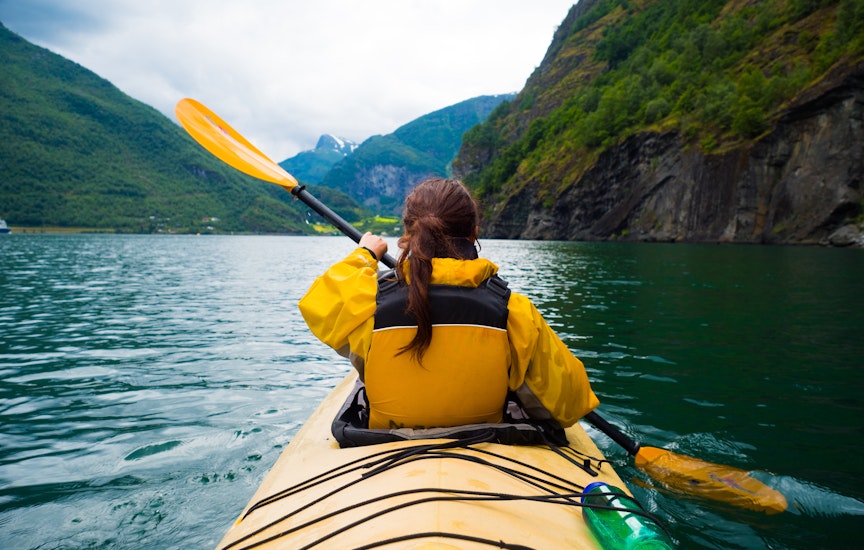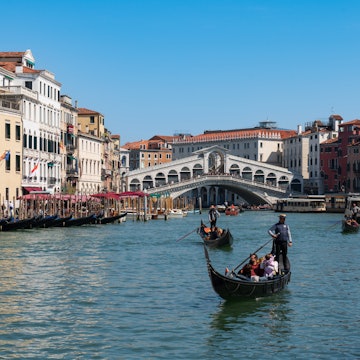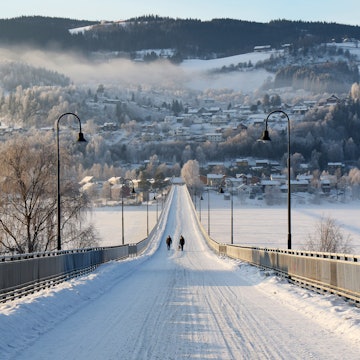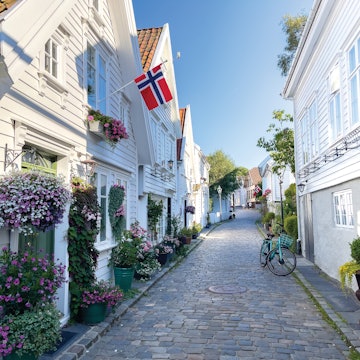

A winter scene in Bryggen, the historic port of Bergen, Norway. Tatyana Vyc/Shutterstock
Bergen ranks among Scandinavia’s most beautiful cities.
Surrounded by seven hills and seven fjords, Norway’s second city has gorgeous wooden architecture that enlivens its compact historic center. With medieval Bryggen as its centerpiece, the area around Bergen’s inner harbor hums with people, energy and a feel-good atmosphere that draws visitors from across Europe and further afield. The city is known for its excellent culinary and music scenes, and the hills that surround it are crisscrossed with cable cars and hiking trails.
You could easily spend a week in Bergen getting to know its charms and hidden corners. In this sense, Bergen is a worthy destination in its own right – yet at the same time, the city is the premier gateway to Norway’s majestic fjords.
Here are a few of the top things to do in Bergen, Norway.
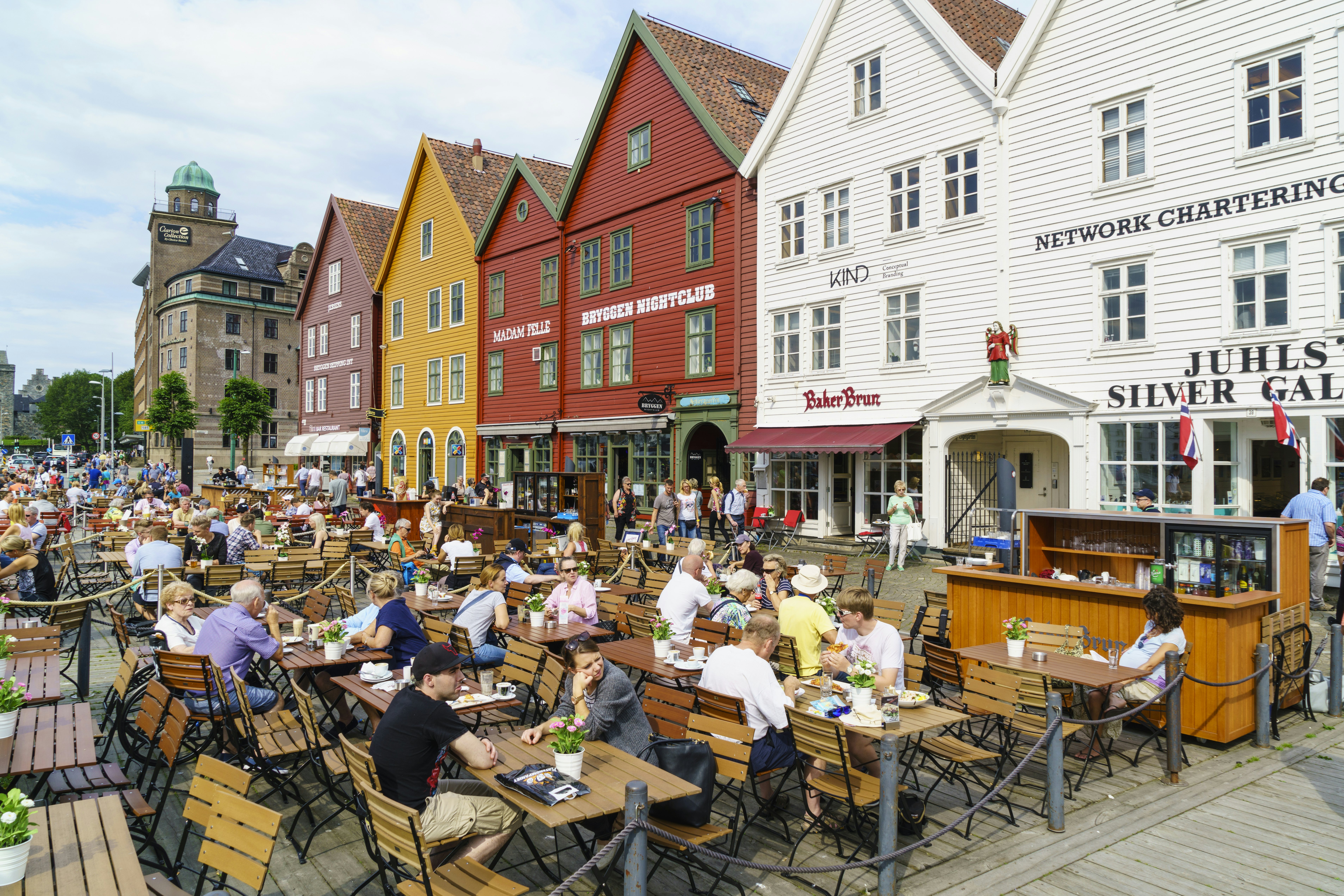
1. Explore the medieval district of Bryggen
Bergen’s old city wharf, UNESCO World Heritage–listed Bryggen has been the city’s beating heart since the Middle Ages, when it was a major trading center and the site of one of the powerful Hanseatic League’s four foreign stations. Running along the eastern shore of Vågen Harbor (bryggen translates to “wharf”), Bryggen you'll see a superb collection of colorfully painted wooden, rough-plank buildings leaning at precarious angles. Behind the facades, shoulder-width openings lead invitingly into dark corridors lined with artisan workshops and small boutiques. Here the floorboards and leaning wooden walls creak as they would on an old sailing ship.
At Finnegården, at Bryggen’s southern end, two connected merchant houses from the early 18th century are preserved as the Hanseatic Museum. (After centuries of decay, these buildings are getting a much-needed restoration and are closed until 2027.) Luckily, you can still get a sense of what life was like for Hanseatic merchants by visiting Schøtstuene, a set of former assembly rooms near the 12th-century Mariakirken, Bergen’s oldest building. Schøtstuene were the only buildings on Bryggen where open fires were permitted, making them popular gathering places during the cold, dark winters. Here, merchants dined and hosted parties, meetings and important discussions.
At Bryggens Museum, which incorporates ruins from the 12th century, you can see many artifacts revealed by the fire of 1955 (which destroyed a third of the city), from clothing and household objects to tools, utensils and fragments of letters – all of which provide glimpses into what life and work were like here centuries ago.
Planning tip: If you’ll be in town for a few days and want to cram in as much as possible, the Bergen Card entitles you to free or discounted entry to museums, public transport, tours, the Fløibanen funicular and even concerts.
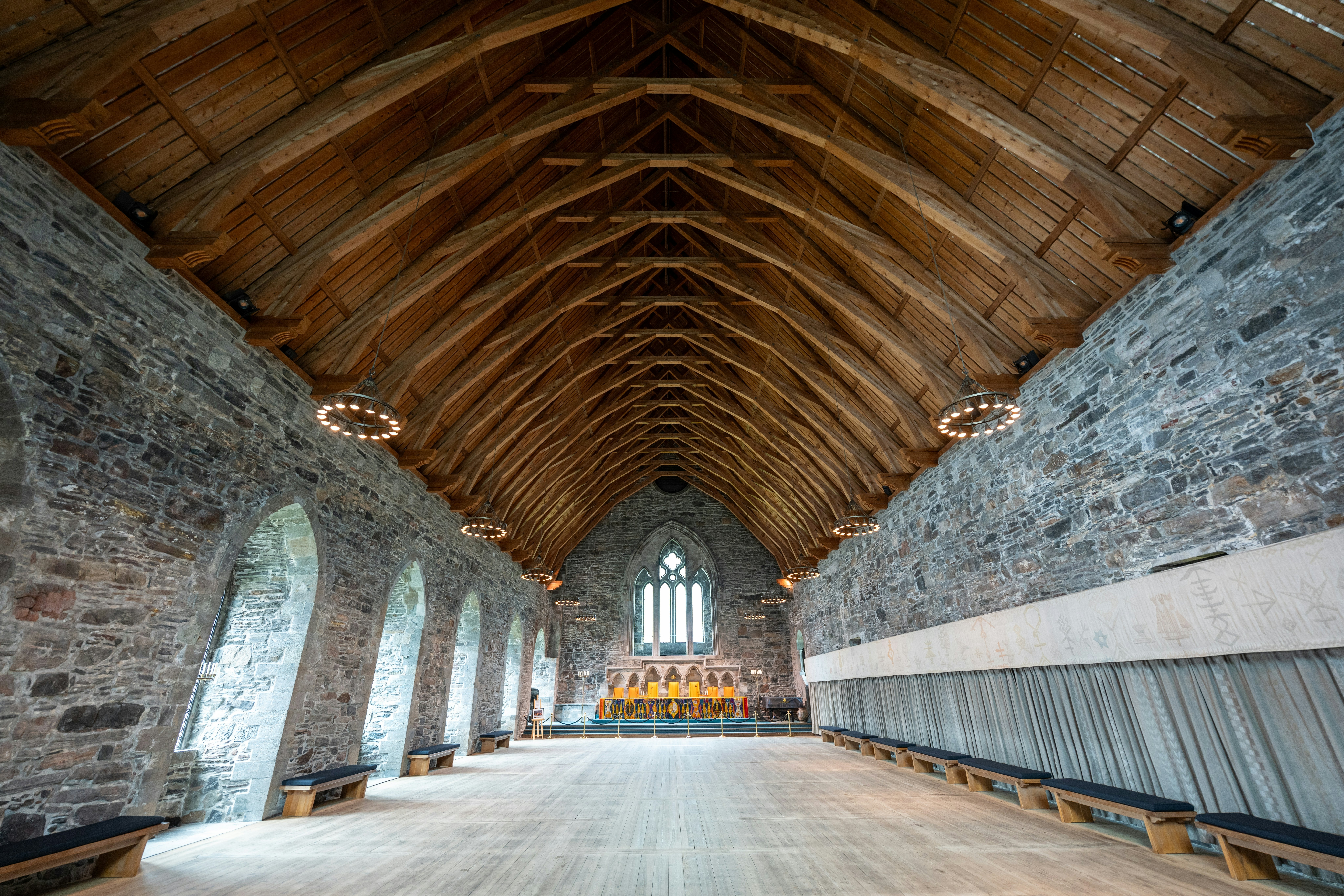
2. Get close to Bergen’s rich history at Bergenhus fortress
Dominating the north side of Vågen Harbor, Bergenhus fortress represents nearly 1000 years of Norwegian history, with three sites from different time periods merged into a single large military complex. The oldest part dates from about 1070, when the founder of Bergen, King Olav Kyrre, built Christ Church cathedral and other religious buildings on the site.
Soon, Bergenhus became one of the principal seats of the Norwegian kings, including Håkon Håkonsson, who was crowned in Christ Church in 1247 and proceeded to build the impressive stone banquet hall Håkonshallen. Norway’s largest extant building from the Middle Ages, the hall is open to the public when not in use for special events. When Håkonshallen is closed (or even when it’s open), you can visit Rosenkrantztårnet, a stone tower built by King Magnus Lagabøte around 1270 and expanded 250 years later.
Even after Norway’s political center shifted east, Bergenhus continued to serve as an important administrative and military hub. The only time the fortress saw battle was in 1665, when a large Dutch fleet, pursued by English warships, sought safe harbor in Bergen. The English attacked – but the Bergenhus garrison intervened on the side of the Dutch, forcing the English to flee. During WWII, occupying German forces used Bergenhus as their headquarters.
Planning tip: See if a ticketed event is happening at Håkonshallen while you’re in town. Check out platforms like Songkick and Ticketmaster for upcoming bookings; the Bergen International Festival also programs events at the venue each spring.
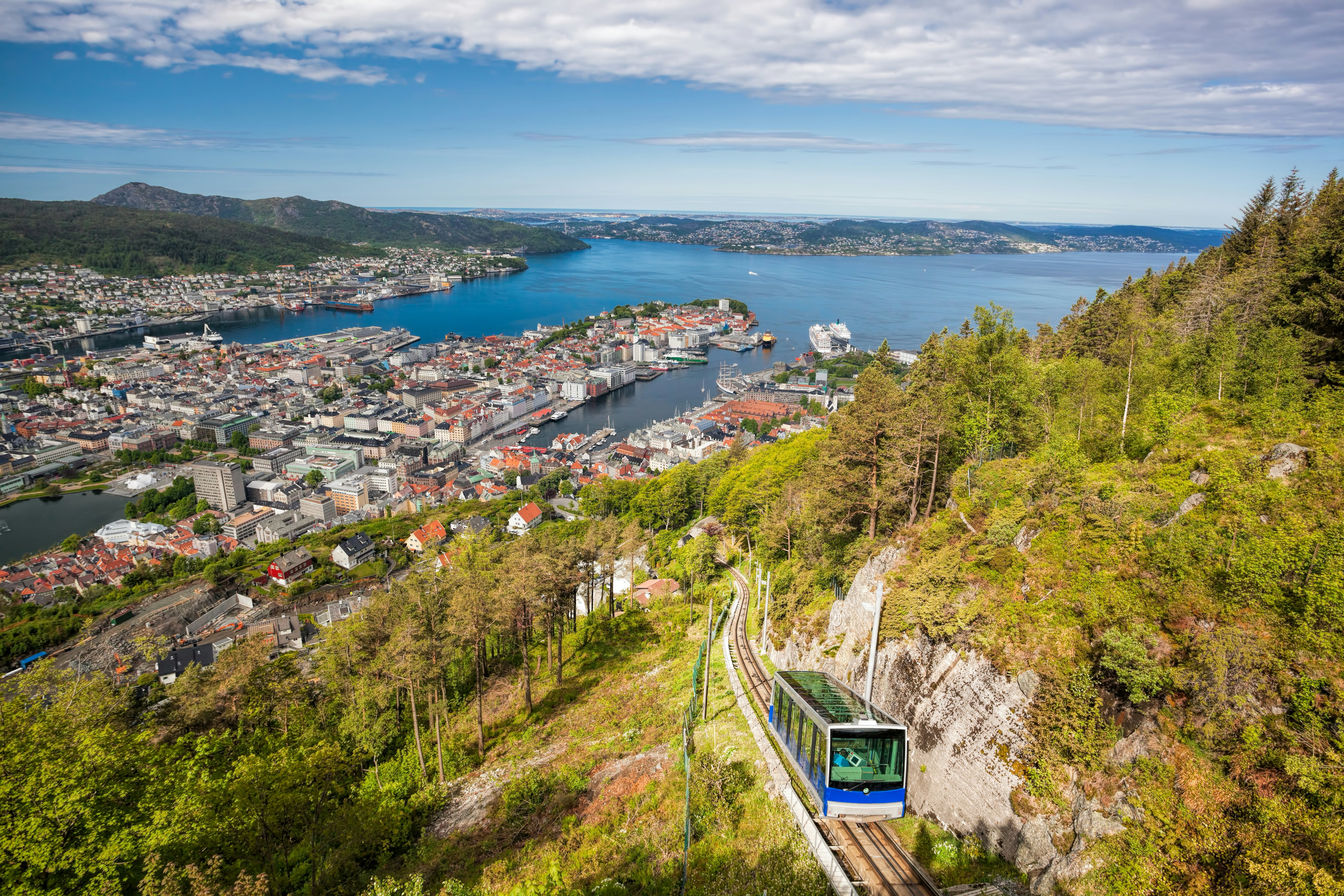
3. Take in views of Bergen from above
What’s one of the best things you can do once you’re in Bergen? Leave the city – that is, by climbing one of the mountains that surround it, for Bergen is simply magnificent when admired from above. The most popular option is Fløibanen, a 26-degree-incline funicular that ambles from the city center up a pretty, forested hillside dotted with whitewashed wooden homes, to the summit of Mt Fløyen (1050ft/320m).
From the viewing platform, Bergen unfurls into the fjords – and from up here, Bryggen looks like a toy town. Walking paths fan out from the top: the most popular route is to take Track 4 clockwise, then connect with Track 6, which switchbacks back down to the harbor. (Pick up a map of the mountain from the tourist office before setting out.)
A little further from the harbor but still easily accessible from downtown, Mt Ulriken (1220ft/643m) is twice the height of Fløyen and every bit as beautiful. The Ulriken643 cable car speeds in just seven minutes to the top, which offers a superb panorama over city, fjords and mountains. Of the many hiking trails from here, the best is the four- to six-hour path running north across the ridges to the top of the Fløibanen funicular.
Planning tip: A zip line at the top of Mt Ulriken lets you take in the vertiginous views with even fewer obstructions.
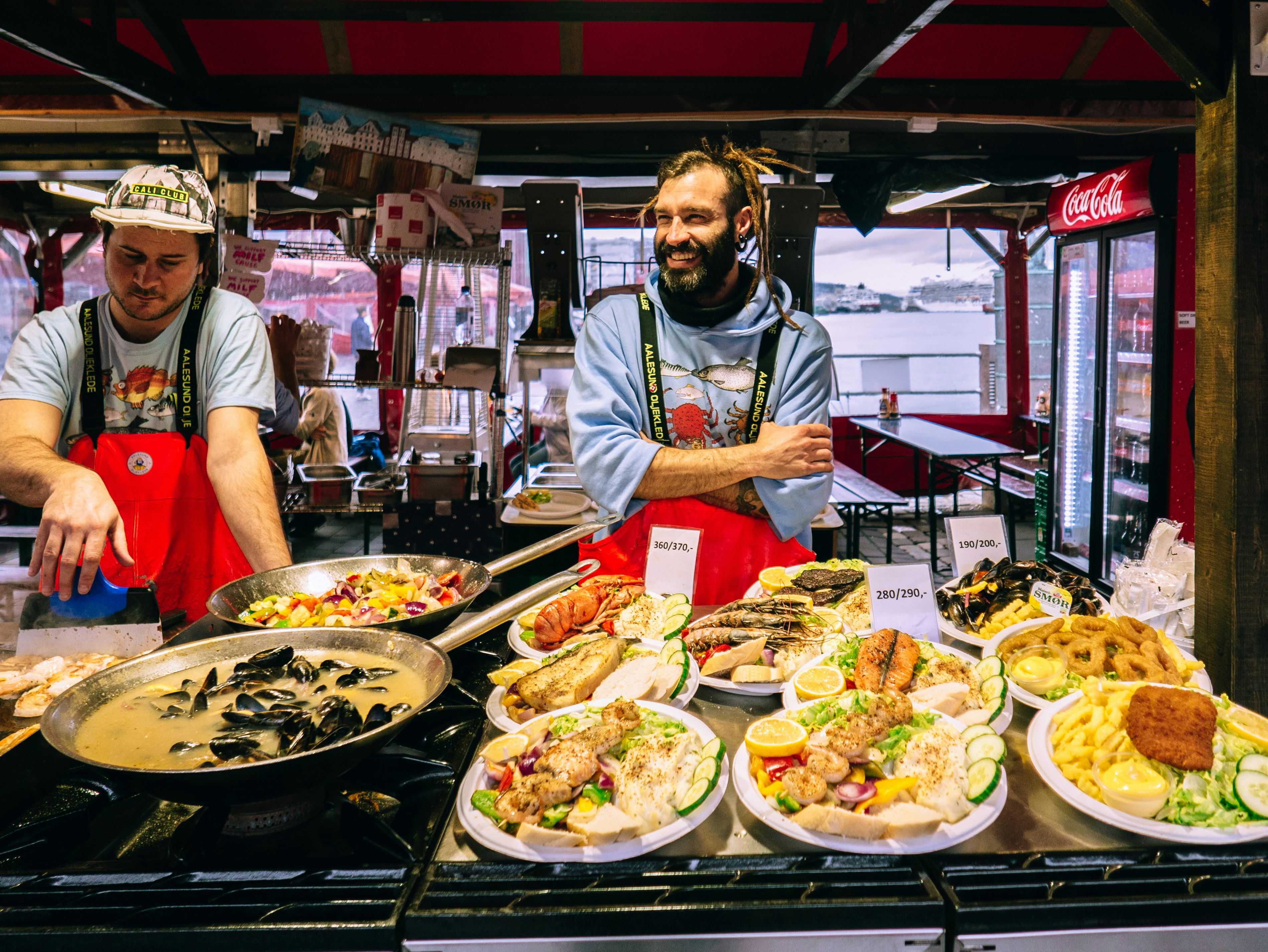
4. Taste your way across Norway’s culinary capital
Bergen has everything from atmospheric dining halls in Bryggen dating to Hanseatic times to cutting-edge temples to New Nordic cuisine to bastions of home cooking.
A standout is Pingvinen, where locals come for the meals their parents and grandparents used to cook. The menu might include kjøttkaker (meatballs with mushy peas and lingonberries), plukkfisk (cod with mashed potatoes, bacon and flatbread) or lapskaus (salted-lamb stew). Such hearty dishes are a tasty example of husmanskost (home cooking) – a trend that’s taken off in response to the relentless experimentation New Nordic chefs have unleashed in recent years.
In its casual red tents on the harbor front, Torget Fish Market serves ready-to-eat salmon, calamari, fish and chips, prawn baguettes and seafood salads. Far slicker, Fisketorget Mathallen offers permanent stands, each with its own menu, from sit-down meals to traditional, creamy bowls of fish soup, oysters and caviar.
One of Norway’s best streets for eating, Marken runs from the train station to the harbor and is filled with multicultural options and fun cafes. Try uber-cool Råvarene, Bergen’s first zero-waste cafe, with sandwiches (open and otherwise), salads and snacks that use locally sourced, sustainable ingredients.
Historic Bryggen dining rooms don’t get any more grand and authentic than Bryggen Tracteursted. The restaurant occupies a 1708 building that ranges across the former stables, kitchen (note the stone floor – it was once the only Bryggen building permitted to have a fire) and Bergen’s only extant schøtstuene (dining hall). The restaurant serves traditional Norwegian dishes that change regularly but never disappoint.
Planning tip: If you’re feeling splurgy, reserve well ahead at Michelin-starred Lysverket, where a 10-course tasting menu delivers the best New Nordic – or, as they call it in these parts, “Neo-Fjordic” – cuisine in town.
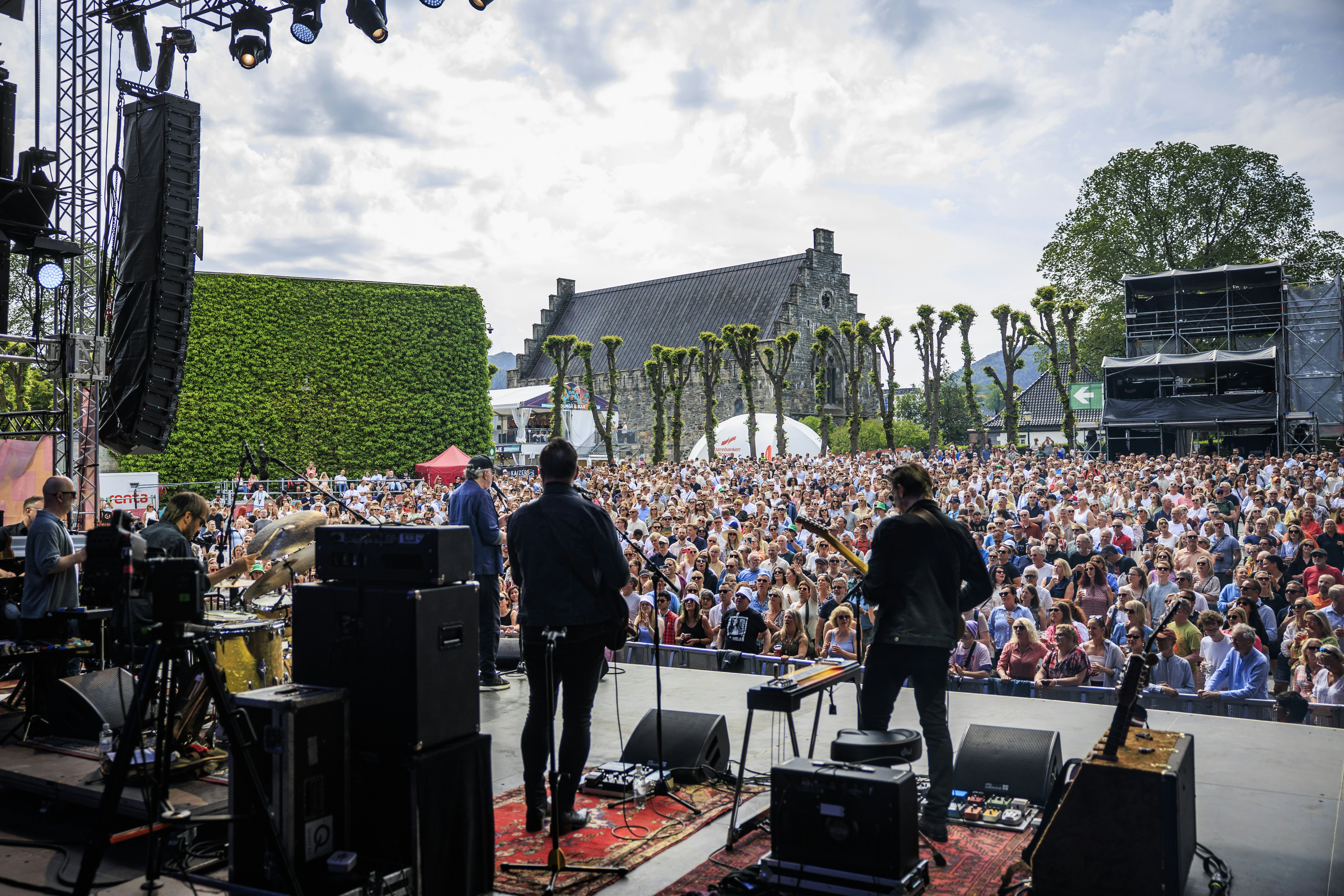
5. Check out Bergen’s vibrant live-music scene
Like no other city in Norway, Bergen has music in its soul – and most of it’s aimed at a local audience. The “Bergen Wave” was largely responsible for putting Norway on the world electronica circuit in the first years of the 21st century, with Østre now the city’s home for cutting-edge Norwegian EDM. Hulen is an almost mythic venue among European heavy-metal and indie-rock fans. Rocking out since 1968, it’s suitably dark and occupies a converted bomb shelter.
The fab little Café Sanaa thrums to a mix of live and DJ-spun jazz, blues and West African beats. Madam Felle in Bryggen is a fine little genre-busting venue – and there’s no lovelier place for live music on a summer’s evening than waterfront USF Vertfet. Classical-music lovers, meanwhile, have plenty to cheer whenever the Bergen Philharmonic Orchestra takes to the stage at Grieghallen – a venue named for composer Edvard Grieg, perhaps the city’s most famous musical son.
Planning tip: Every spring, the Bergen International Festival draws luminaries from the worlds of opera and classical music to town for two weeks of world-class music making. Taking over the city, this sprawling event is well worth planning a trip around.
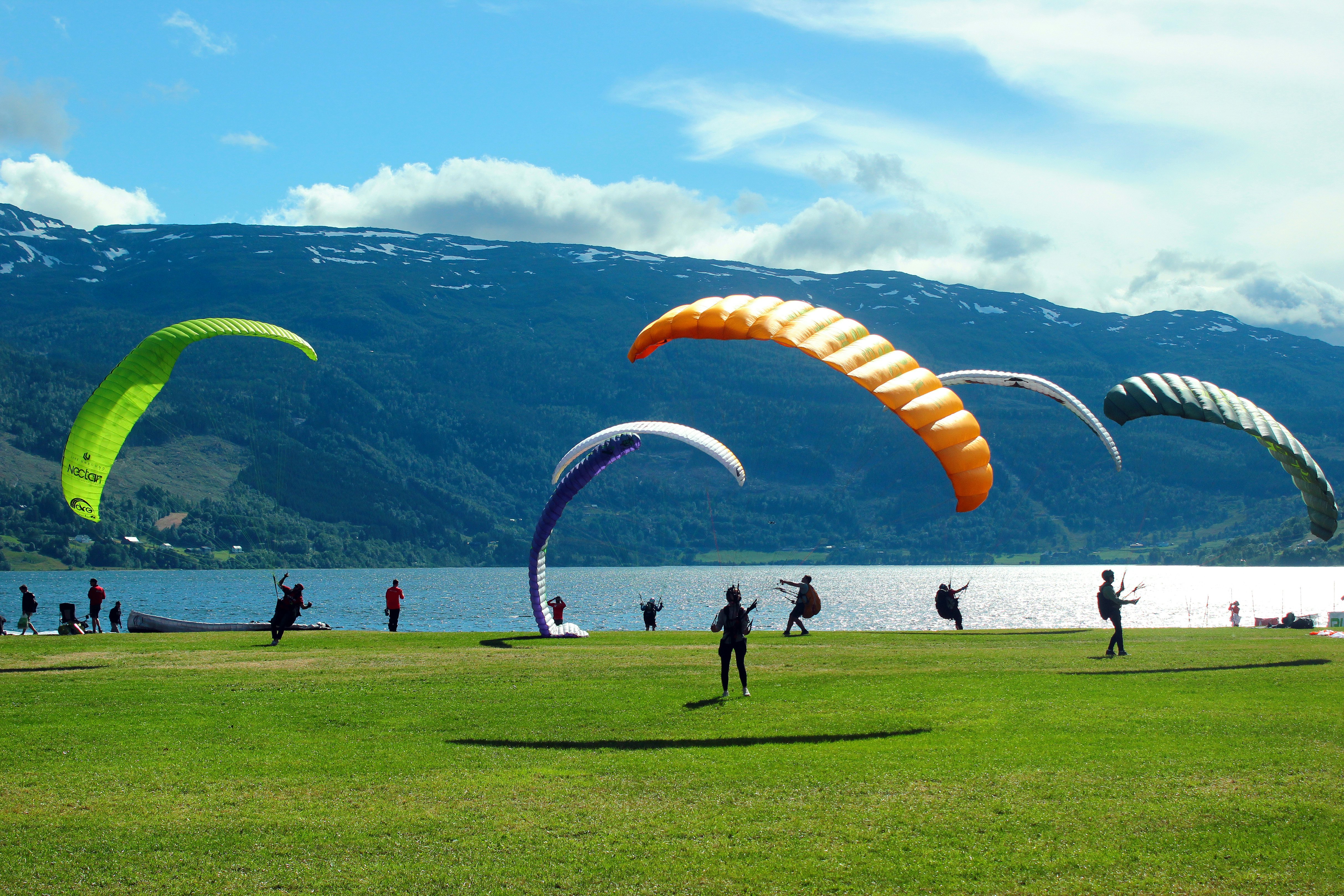
6. Seek out thrills in Voss, Norway’s extreme-sports capital
Adventure seekers from around the world flock to Voss, a small town 90 minutes by car from Bergen that’s earned a well-deserved reputation as a paradise for adrenaline junkies. Situated between two lakes, surrounded by mountains, and within easy reach of Bergen and Norway’s two longest fjords (Sognefjord and Hardangerfjord), Voss offers just about every type of outdoor activity you can imagine.
Lace up your hiking boots or cycling shoes – or strap on skis and snowshoes in winter – to hit the trails on a tour led by a top-notch operator such as Voss Active, Wild Voss or Outdoor Norway. Hiking, mountaineering, rock climbing and mountain biking are all on the menu, as are water-based activities such as river canoeing, sea kayaking, SUP, riverboarding, canyoning and white-water rafting on the Class III Raundalselva.
While sea-kayaking trips largely take place at nearby fjords, you can also paddle in Voss on lakes Vangsvatnet and Lønavatnet with Nordic Ventures. For anyone serious about improving their paddling technique, Vått & Vilt offers half- and two-day courses in sea and river kayaking.
For a different kind of adrenaline rush, head to Voss Active’s High Rope & Zipline Park. And if that’s not exciting enough, how about parachuting or tandem skydiving with Skydive Voss or indoor flying in the wind tunnel at Voss Vind?
Planning tip: In the last week of June, Ekstremsportveko, the world’s largest extreme-sports festival, arrives in Voss, Expect an exhilarating program of adrenaline-fueled activities for all ages and levels of experience – including skateboarding, paragliding, dødsing (death diving) and much more. Plan well ahead if you want to visit Voss at this time.
This article was adapted from Lonely Planet’s Scandinavia guidebook, published in July 2025.





